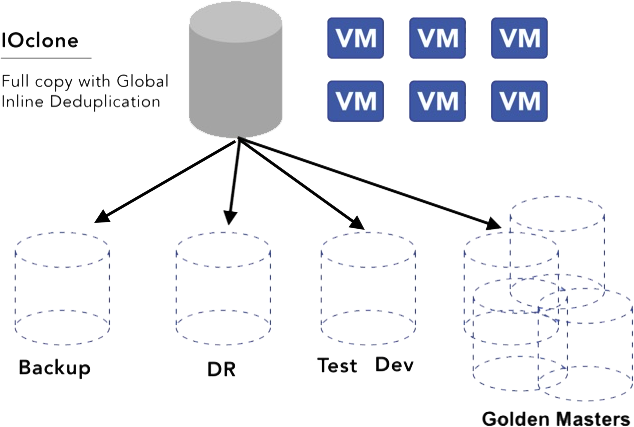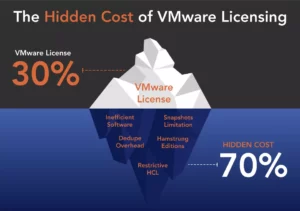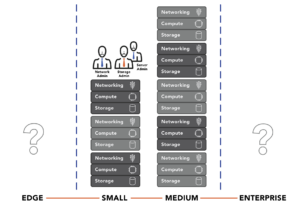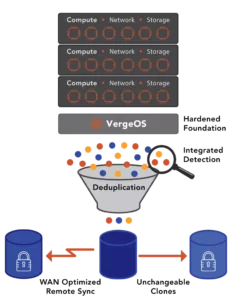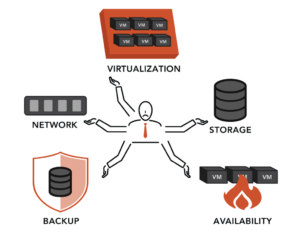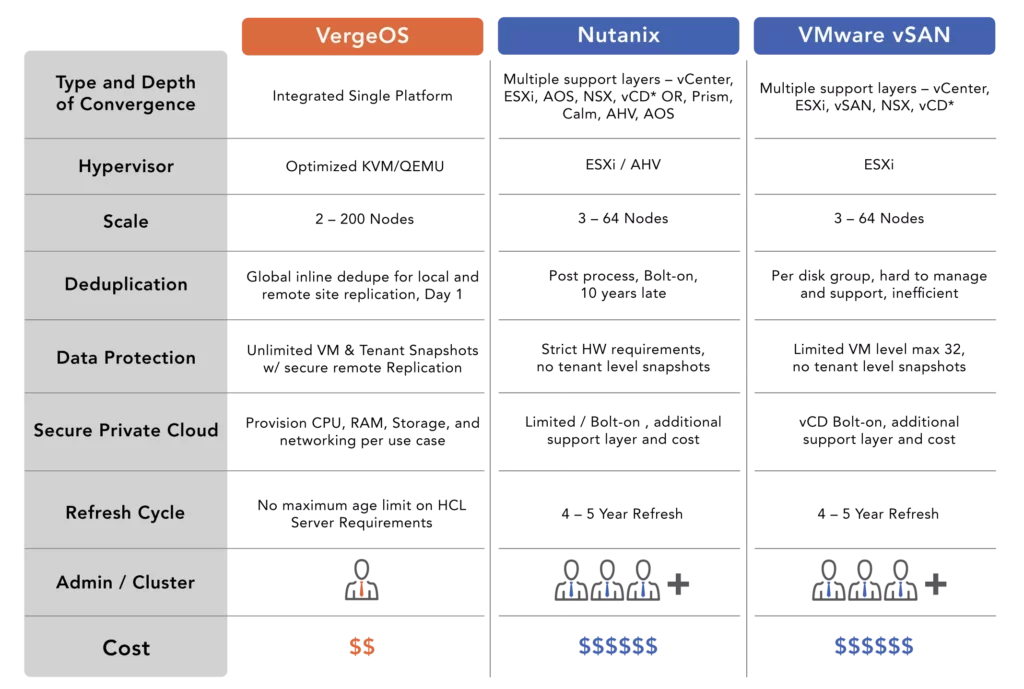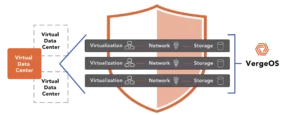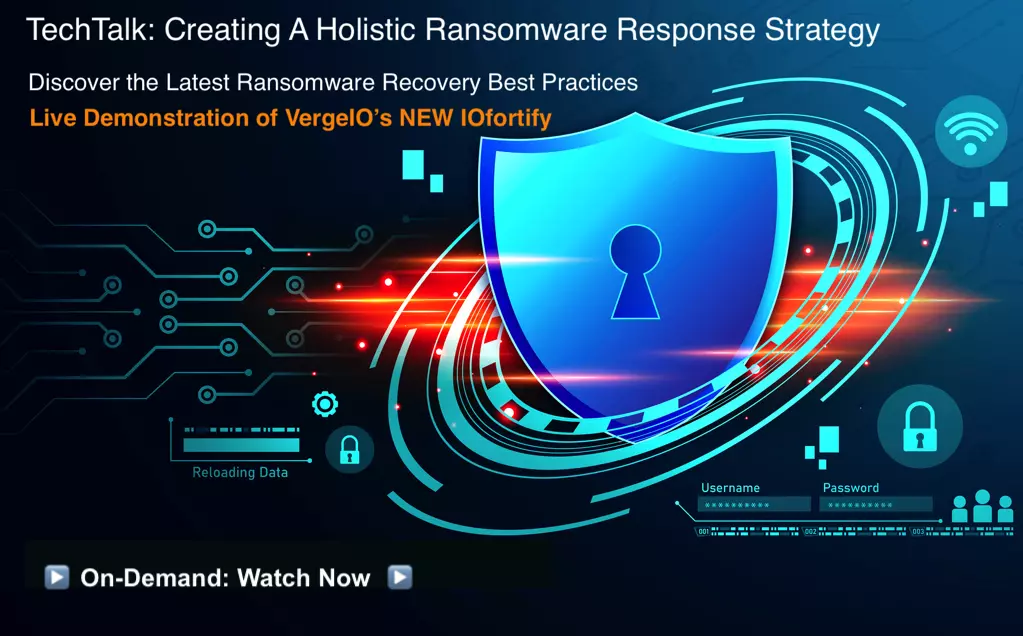
As IT leaders consider the practicality of a VMware exit, they will also consider hyperconverged infrastructure. However, the inability to scale flexibly means that HCI isn’t an infrastructure they can use as a replacement platform. Even the few HCI solutions that are not dependent on VMware as their hypervisor suffer the problem of brittle scalability.
The Three Requirements of Flexible Infrastructure
A flexible infrastructure must meet these three requirements:
- The ability to scale small, less than three nodes for Edge, Remote Office, and small business data centers.
- The ability to scale large, dozens to hundreds of nodes, to meet the demands of an enterprise data center.
- The ability to manage nodes of different types, CPU brands, compute-only, and storage-only, so that it can adapt to the ever-changing needs of the data center.
The inability to meet these requirements with a single solution means that if an organization selects HCI as its infrastructure strategy, it likely will either need multiple HCI solutions to cover the organization’s needs, or at least multiple instances of the same HCI solution. Ironically, Hyperconverged Infrastructure (HCI) isn’t an infrastructure, nor does it converge.
UCI is Infrastructure
Because of its inflexibility, a counter to HCI, which is relegated to niche use cases, is Ultraconverged Infrastructure (UCI). UCI is an infrastructure, Data Center Operating System (DCOS), and does truly provide convergence. VergeOS is a UCI solution that can scale small, large, and is flexible which allows it to adapt to the changing needs of organizations. Additionally, it is not dependent on VMware, which makes it an ideal alternative for customers looking for a VMware exit.
Infrastructure Must Scale Small
Not every business is an enterprise, but most need compute capabilities beyond what cloud-based SaaS applications can provide. As those businesses scale, the cost of the cloud becomes a significant factor. The point of entry for most HCI solutions is a three-server configuration which becomes nodes in its cluster. This requirement is often too large for Edge, Remote Office, and Small Data Center use cases.
As a result of the inability to scale small, most IT planners rule out HCI for these use cases and compromise with standalone servers and an inexpensive shared storage solution. The compromise increases the cost of acquiring the hardware and software for Edge, Remote Office, and Small Data Center use cases, and it increases complexity in an area that must have simplicity. These use cases have limited or no IT administrators, especially at the Edge.
UCI Scales Small
Users can start with as few as two nodes, and because of VergeOS’ efficiency, those nodes can be very cost-effective mini-servers, ideal for the Edge or Remote Office use cases. Even small data centers can run comfortably on two or three low-end to mid-range servers, reducing hardware acquisition costs by 50% or more. Learn more about the advantages of using UCI in small data centers here.
VergeOS’ efficiency comes from its tight integration of the network, compute, and storage tiers into a single, cohesive data center operating system (DCOS). The actual convergence of those tiers, instead of HCI’s approach of an “elegant bundle,” means the elimination of redundant metadata tables, databases, APIs, and management tools. The result is that the underlying hardware is unchained and enabled to reach its full potential.
Infrastructures Must Scale Large
Small businesses grow to medium-sized businesses and then eventually to large businesses. Starting over with a new infrastructure as the business grows is costly and risky.
Again, most HCI solutions start too big to be viable for small data centers or Edge, but the few that focus on the smaller end of the market often can’t scale large enough to meet the organization’s demands as it grows. They often can’t scale past six to eight nodes. The result is IT must replace the “starter-HCI” solution with another more scalable solution. The replacement often includes replacing hardware since each HCI solution seems to have a unique hardware compatibility list or comes “bundled” with hardware.
Even so-called enterprise HCI solutions have limitations and can scale to only a few dozen nodes, which is not large enough to provide complete infrastructure consolidation. There is also a practical limit to how large HCI solutions can scale. Most vendors use standard IO protocols to communicate between nodes, which means that every node must be “touched” every time a packet is received by the cluster, creating an untenable amount of internode, or east-west traffic.
Yet another part of the challenge is that most HCI solutions don’t include complete layer 2 and layer 3 networking functionality in their product. At most, they provide virtual switching or they bundle in, yet again, another third-party software-defined networking product. The lack of native networking functionality means that HCI clusters can’t practically scale to more than a dozen nodes without suffering a performance impact.
These challenges are why the legacy three-tier architecture continues to be the bread-and-butter infrastructure for enterprises. It is also why most IT leaders believe that HCI cannot replace standalone networking, virtualization, and storage.

UCI Scales Large
VergeOS can not only start as small as two nodes, but it can grow to well over one hundred nodes. Organizations of any size can start using VergeOS with confidence that it can grow or shrink, to meet their needs. The team at VergeIO also developed a proprietary networking protocol that optimizes internode communication, significantly reducing east-west traffic and making scale technically possible and practical.
Infrastructure Must Scale Flexibly
Infrastructure flexibility is a critical requirement because small and large businesses evolve. Their IT needs are not static, and neither should their infrastructure be. It needs to adapt to innovations in hardware and business needs.
Most HCI solutions are rigid in their configuration, only supporting specific hardware and forcing customers to upgrade to new hardware as the infrastructure software is updated. In HCI terms, scaling up typically means adding identical nodes, making it difficult to take advantage of the latest hardware advancements or adopt new types of nodes, such as storage-only or compute-only. HCI’s lack of flexible scaling also poses challenges when organizations want to retire or replace outdated equipment. Mixing old and new equipment within the same cluster is almost impossible.
The typical HCI setup often means organizations must create separate instances for workloads and hardware types. This approach fragments the overall infrastructure and creates more complexity, reducing operational efficiency and leading to underutilized resources. The inability to mix and match different types of nodes within the same cluster further diminishes the flexibility and cost-effectiveness of HCI.
UCI Scales Flexibly
On the other hand, UCI provides an answer to the rigidness of HCI. VergeOS supports multiple types of nodes, such as compute-only or storage-only nodes, which allows it to scale flexibly to match the dynamic needs of the business. As technology evolves and new hardware becomes available, VergeOS users can integrate these advances seamlessly into their existing setup. Customers can, for example, mix in AMD, Intel, and GPU nodes into the same instance.
Furthermore, with VergeOS, it’s possible to maintain a diverse set of hardware in a single instance, preventing infrastructure fragmentation. This capability allows businesses to adjust their IT setup as the organization grows and its needs change, ensuring they always have the most cost-effective and efficient infrastructure.

Conclusion
VergeOS is an ideal solution for businesses seeking a flexible, scalable, and efficient IT infrastructure. UCI surpasses HCI in meeting the demands of a dynamic business environment, ensuring that businesses can focus on their core competencies without worrying about their infrastructure. Whether it’s a small enterprise looking to grow or a large organization needing to maintain agility and efficiency, VergeOS has the features and flexibility to accommodate their needs. Compare HCI with UCI here.
To learn more about scaling IT infrastructure, watch our on-demand webinar, “How to Eliminate the Data Center Scale Problem.”
